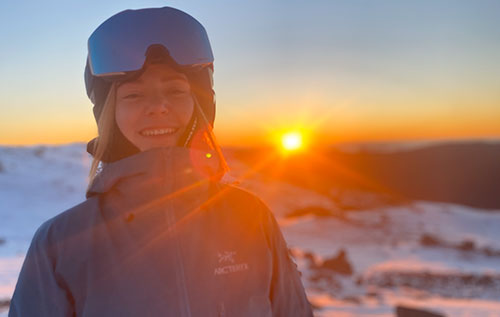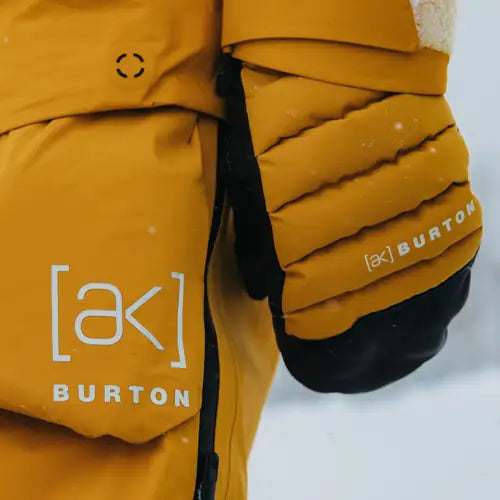Planning your first proper snow trip or finally ready to ditch the rental gear? You're probably wondering what all the fuss is about when it comes to "outerwear." Fair dinkum, it can feel like you need a degree in fabric science just to buy a jacket these days.
Here's the thing, though: once you understand what outerwear does and how it fits into your snow kit, choosing the right gear becomes way less overwhelming. Whether you're chasing powder in Japan, hitting the Australian slopes, or gearing up the kids for their first snow adventure, we've got you sorted.
What Counts as Outerwear?
Think of outerwear as your first line of defence against the mountain weather. It's the outermost shell in your snow clothing system, typically your waterproof jacket, pants, or bibs that sit over everything else.
Here's what makes outerwear different from your other layers: its main job isn't to keep you warm (though some insulated options do that too). Instead, it's designed to protect you from wind, wet snow, and precipitation while letting sweat escape from your body.
You'll come across two main types:
-
Shell Outerwear: Think of this like a high-tech raincoat for snow. It's all about protection: waterproof, windproof, and breathable, but with no built-in insulation. You layer up underneath for warmth.
-
Insulated Outerwear: This combines protection with warmth, featuring built-in insulation (down or synthetic) along with waterproofing. Perfect if you prefer fewer layers or run cold on the mountain.

How Outerwear Fits Into the Layering System
Snow clothing works as a system, and outerwear is the protective outer shell. The three layers work together:
-
Base Layer: Wicks sweat away from your skin
-
Mid Layer: Provides insulation and warmth
-
Outer Layer (Outerwear): Waterproof, breathable protection from the elements
You can adjust warmth by adding or removing mid layers while your outerwear stays consistent. Your outerwear protects this layering system; it doesn't replace it.
For a complete breakdown of how layering works, check out our guide on what to wear skiing and snowboarding.

Waterproofing, Breathability & Ratings
Those mysterious numbers like 10,000 | 10,000 or 20K | 20K on gear tags tell you exactly how your outerwear will perform when the weather turns.
-
Waterproofing (measured in mm) indicates how much water pressure the fabric can handle before leaking. Higher numbers mean better water resistance.
-
Breathability (measured as MVTR or Moisture Vapour Transmission Rate) tells you how much sweat vapour can escape through the fabric in 24 hours. Higher numbers mean better moisture management.
Here's the thing about waterproofing: most waterproofing gear has a coating on the outside called a DWR finish. When this DWR finishes functions correctly, it allows moisture vapour to escape whilst preventing water from entering.
For detailed explanations of these ratings, check out our waterproof and breathability rating guide.
Insulation: Down vs Synthetic
If you're looking at insulated outerwear, you'll need to choose between down and synthetic insulation. Both work by trapping air to keep you warm, but they each have their strengths.
Down Insulation
Down comes from the fluffy undercoating of ducks or geese and is almost unbeatable for its warmth-to-weight ratio. It's incredibly lightweight, very warm, and packs down small, perfect for hiking or travelling. Down also has impressive longevity and can last decades if cared for properly.
The downside? Down doesn't like moisture. It can clump and lose its insulating power when wet, and it's generally more expensive than synthetic options. If you're going with down, look for the Responsible Down Standard (RDS) certification to ensure it's ethically sourced.
Synthetic Insulation
Synthetic insulation uses polyester fibres designed to mimic down (think PrimaLoft or Thinsulate). It's a solid choice because it performs better in wet conditions, retaining warmth even when damp and drying faster than down.
It's also more affordable and hypoallergenic, making it great for anyone with sensitivities.
The trade-off is that synthetic insulation is heavier and bulkier than down, with a lower warmth-to-weight ratio. It also tends to break down faster over time with repeated use and washing.
Membranes: GORE-TEX, Sympatex & More
If you've been looking at outerwear, you've come across GORE-TEX. But here's the thing: GORE-TEX isn't a single material, and it's not your only option. There are loads of different membrane types out there, each with its own characteristics.

GORE-TEX
One of the originals and most widely recognised waterproof membranes on the market. Used by brands like Burton and Volcom, it works using a microporous membrane with billions of tiny holes that are small enough to block water from outside but large enough to let sweat vapour escape from inside.
Why it's popular: durable, waterproof, breathable, and highly wind-resistant.
Other Key Options
This isn't an exhaustive list, but here are some other common membranes you'll come across:
-
FUTURELIGHT™ (The North Face): Uses nanospinning technology for excellent breathability, especially good for high-output activities
-
Sympatex (DC, Billabong): 100% recyclable and PFC-free, great for environmentally conscious riders
-
H2No (Patagonia): Focus on sustainability and performance
-
DryVent (The North Face): Reliable waterproofing at various price points
-
eVent: Direct venting technology for high breathability
-
Helly Tech® (Helly Hansen): Durable and versatile, ideal for resort days and changing Aussie conditions.

Matching Outerwear to Your Trip Type
Not all snow conditions are created equal, and your outerwear choice should match where and how you're planning to ride.
-
Aussie Conditions: Wet snow means prioritise waterproofing (15,000mm+) and good DWR coatings. Versatile shell jackets work best with our changeable weather.
-
Japan/Europe: Cold, dry powder means breathability becomes more important. Look for windproof gear with room to layer for those bigger powder days.
-
Resort vs Backcountry: Cruising groomers? Prioritise comfort and style. Earning your turns? Focus on breathability, pit zips, and freedom of movement.
-
Family Trips: Kids need bombproof, easy-on gear. Parents want versatile pieces that work on and off the mountain.

Fit, Size & Style Considerations
Getting the right fit is crucial for outerwear performance. Too tight and you'll restrict your layering system and movement. Too loose and you'll look like you're swimming in fabric (plus loose gear doesn't regulate temperature as well).
There's no substitute for trying gear on in-store. Come in wearing or bring along the layers you plan to wear underneath. Your jacket should have enough room to move freely without being baggy, and you should be able to reach above your head comfortably.
Fit Styles
-
Relaxed Fit: More room for layering and freedom of movement. Great for deeper snow conditions and longer days.
-
Tailored Fit: Closer to the body for a more streamlined look. Works well for resort skiing and milder conditions.
Key Fit Points
-
Helmet-compatible hoods that adjust properly
-
Cuffs that work with your gloves
-
Adequate length to prevent gaps when you're in the riding position
-
Layering room without excess bulk
At Rhythm, we believe in inclusive sizing for all snowbodies. Discover the largest range of snow clothing from extra small to plus sizes, with a huge range for women and kids.
Caring for Your Outerwear
Good outerwear is an investment, and proper care keeps it performing at its best for years.
The key is maintaining that DWR finish. The DWR and breathability of your waterproofing gear can be restored by cleaning and waterproofing with quality aftercare products like Nikwax. Regular cleaning and reproofing will keep it performing better for longer whilst helping reduce textile waste.
Basic care steps:
-
Wash according to care instructions (usually 30°C gentle cycle)
-
Use technical wash products, not regular detergent
-
Reapply DWR treatment when water stops beading on the surface
For detailed care instructions, check out our Nikwax waterproofing aftercare guide.

Ready to Find Your Perfect Setup?
Now that you understand how outerwear fits into your snow kit, it's time to find the pieces that'll work best for your adventures. Whether you're after a versatile shell jacket, warm insulated protection, or the extra coverage of bibs, we've got the gear to keep you comfortable on the mountain.
Browse our full range of outerwear online or visit us in-store where our team can help you nail the perfect fit. The right outerwear makes all the difference between a good day and a great day on the mountain. It's not just about staying dry, it's about staying comfortable so you can focus on what matters most: having a bloody good time in the snow.
Posted by Naomi Nevin on























